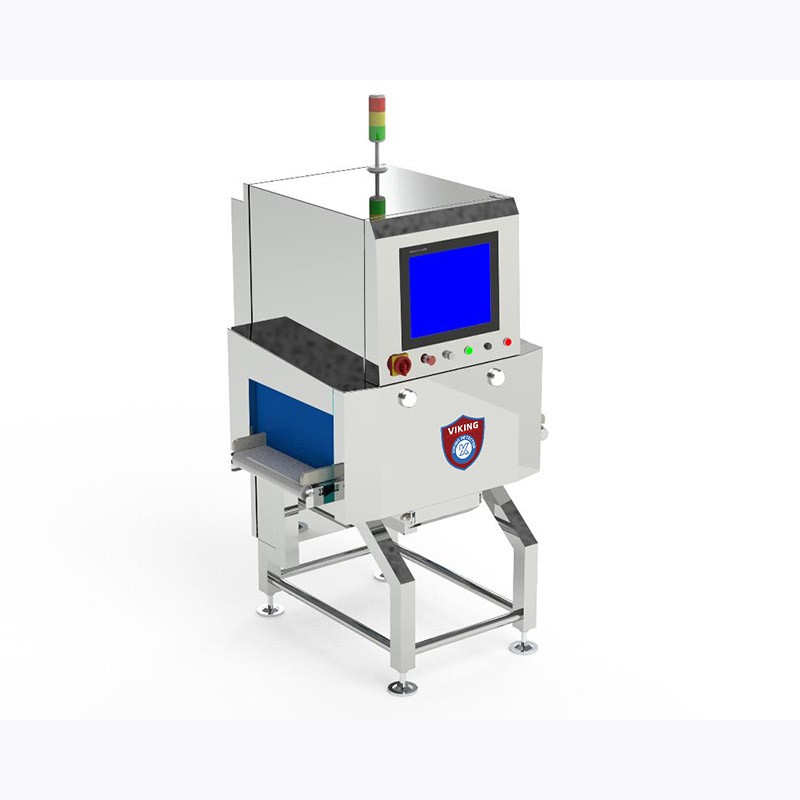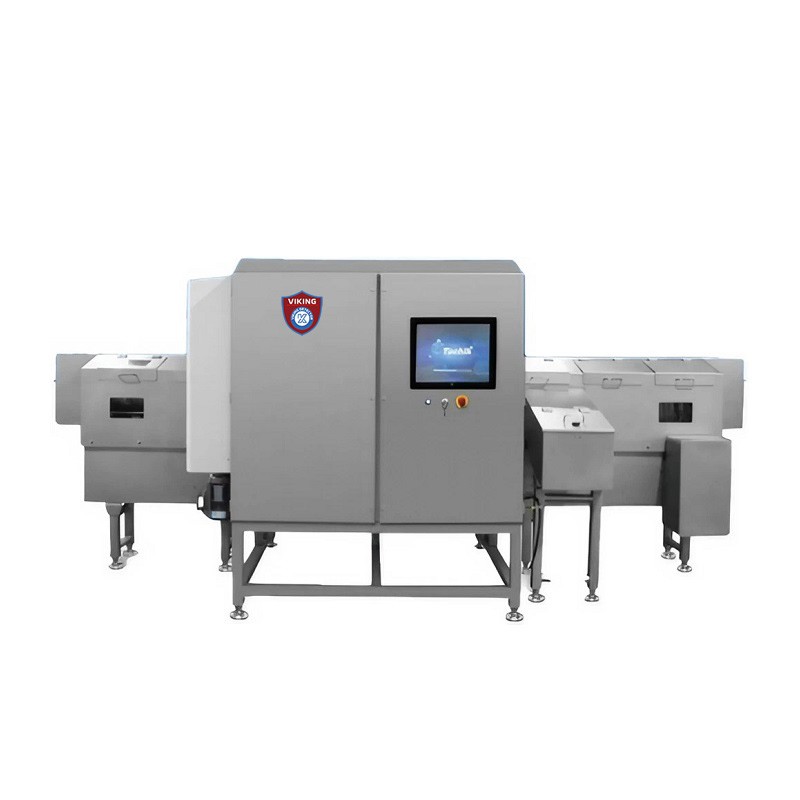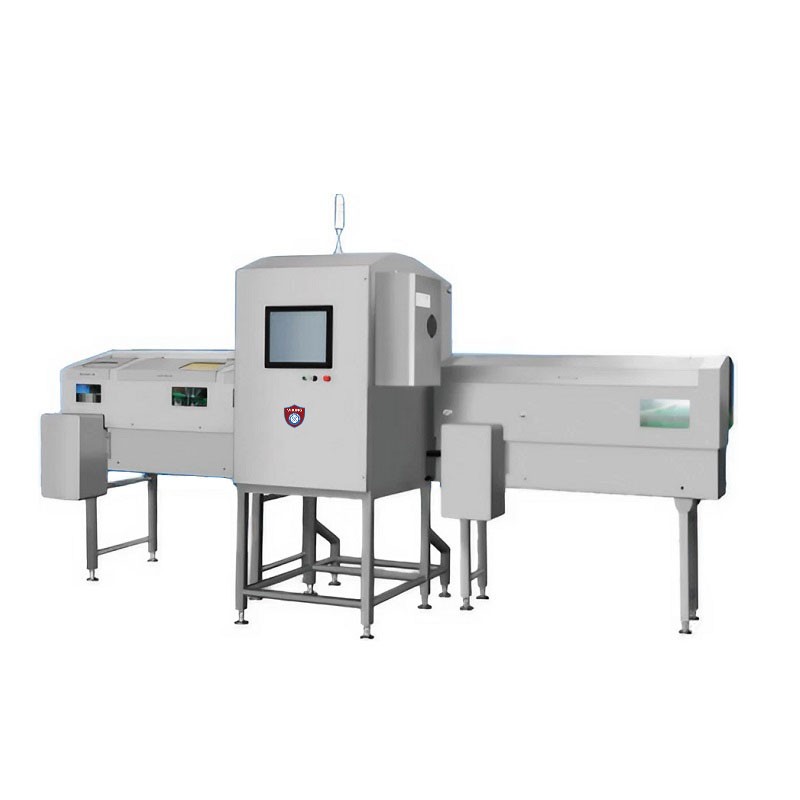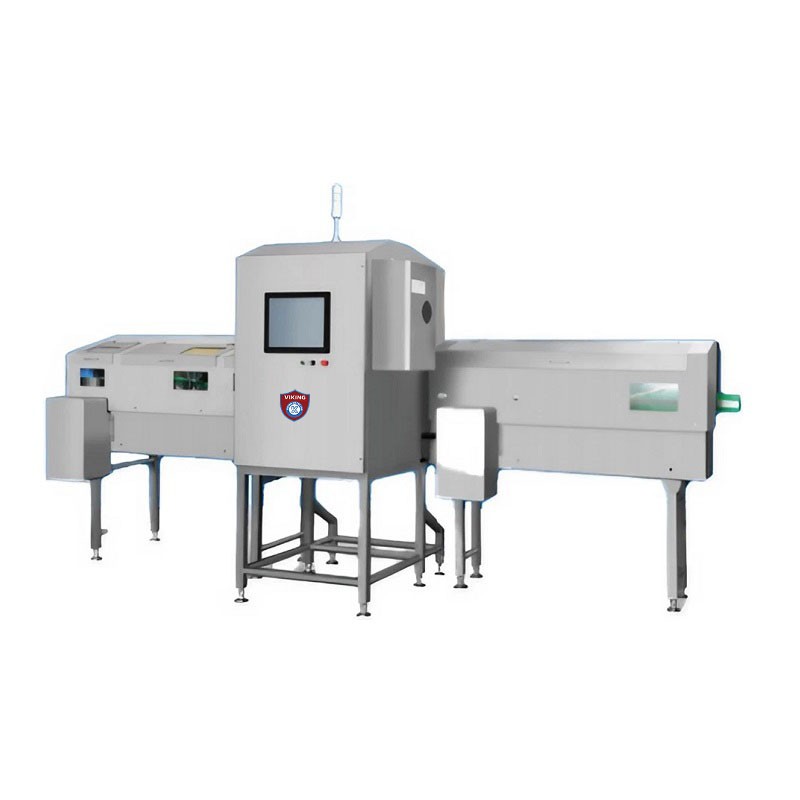X-ray Detector scanner manufacturers VS6035
The principle of detecting foreign objects using X-ray technology revolves around the fundamental property of X-rays to penetrate various materials to different extents. This capability is harnessed in the form of X-ray foreign object detection machines, which play a crucial role in industries such as food processing, pharmaceuticals, and security. These machines ensure product safety, compliance, and integrity by identifying unwanted particles or objects that are otherwise invisible to the naked eye. Let's delve into the detailed operation and significance of this technology.
### X-ray Generation and Emission
The heart of an X-ray foreign object detection machine is its X-ray generator. This component is responsible for producing X-rays, a form of electromagnetic radiation with a wavelength ranging from 0.01 to 10 nanometers, which allows them to penetrate materials that are opaque to visible light. The generator operates by accelerating electrons to high speeds and then colliding them with a metal target, typically made of tungsten or molybdenum. The collision produces X-rays, which are then directed towards the product under inspection.
### Penetration and Contrast
When X-rays pass through a product, their intensity is attenuated to varying degrees based on the density and thickness of the materials they encounter. Dense materials, such as metals and stones, absorb more X-rays and thus appear darker in the resulting images. Conversely, lighter materials like plastics and organic compounds, including food, absorb less radiation and appear lighter. This variation in X-ray absorption creates a contrast that is critical for detecting foreign objects. The key to effective detection lies in the machine's ability to distinguish between the product and potential contaminants based on their density differences.
### Detection and Imaging
As X-rays pass through the product, they are captured by an X-ray detector located on the opposite side of the X-ray source. Modern detectors are highly sophisticated, capable of converting the absorbed X-rays into digital signals. These signals represent the intensity of the X-rays that have passed through the product, effectively creating a digital image of its internal structure. This image reveals not just the shape and size of the product but also any foreign materials embedded within it.
### Image Processing and Recognition
The digital images obtained are then subjected to advanced image processing techniques. This step is crucial for interpreting the raw data and transforming it into actionable information. Algorithms designed for edge detection, contrast enhancement, and noise reduction improve the clarity and detail of the images. Following image processing, visual recognition technologies are employed to analyze the enhanced images. These technologies leverage machine learning and artificial intelligence to identify patterns, shapes, and densities that correspond to foreign objects.
### Integration of Technologies
The effectiveness of X-ray foreign object detection machines is not solely dependent on X-ray technology but also on the integration of several key technologies:
- **Optoelectronics**: This involves the use and manipulation of light (including X-ray light) and electronic devices that detect and control light. In the context of X-ray detection machines, optoelectronic components are essential for the conversion of X-rays into visible images or digital signals.
- **Digital Signal Processing (DSP)**: DSP techniques are applied to the digital signals obtained from the X-ray detector to enhance image quality and to facilitate the identification of foreign objects with high accuracy.
- **Image Processing**: Through various algorithms, this technology enhances raw images to highlight features of interest and suppress irrelevant information, making it easier to detect foreign objects.
- **Recognition**: This entails the application of pattern recognition and machine learning algorithms to distinguish between normal product components and foreign objects. The software is trained to recognize a wide range of materials, shapes, and sizes, enabling it to identify contaminants with high precision.
### Applications and Significance
The application of X-ray foreign object detection machines spans several industries, emphasizing their versatility and critical role in ensuring product quality and safety. In the food industry, they are used to detect bones, metal fragments, stones, and high-density plastics in products. Pharmaceutical companies utilize these machines to ensure that pills and capsules are free from contamination. Additionally, the technology is applied in the security sector for baggage scanning and in manufacturing for quality control.
The significance of X-ray foreign object detection lies not only in its ability to protect consumers but also in its contribution to maintaining brand integrity and compliance with regulatory standards. By identifying and removing contaminants, businesses can avoid costly recalls, legal issues, and damage to their reputation.
In conclusion, X-ray foreign object detection machines represent a fusion of physics, engineering, and computer science, harnessing the penetrating power of X-rays to ensure the safety and integrity of products across various industries. Through the integration of optoelectronics, digital signal processing, image processing, and recognition technologies, these machines offer a sophisticated and reliable means of detecting foreign objects, underscoring their indispensable role in modern quality control processes.
x ray security scanning detector machine
X-ray Foreign Object Detector Parameters





